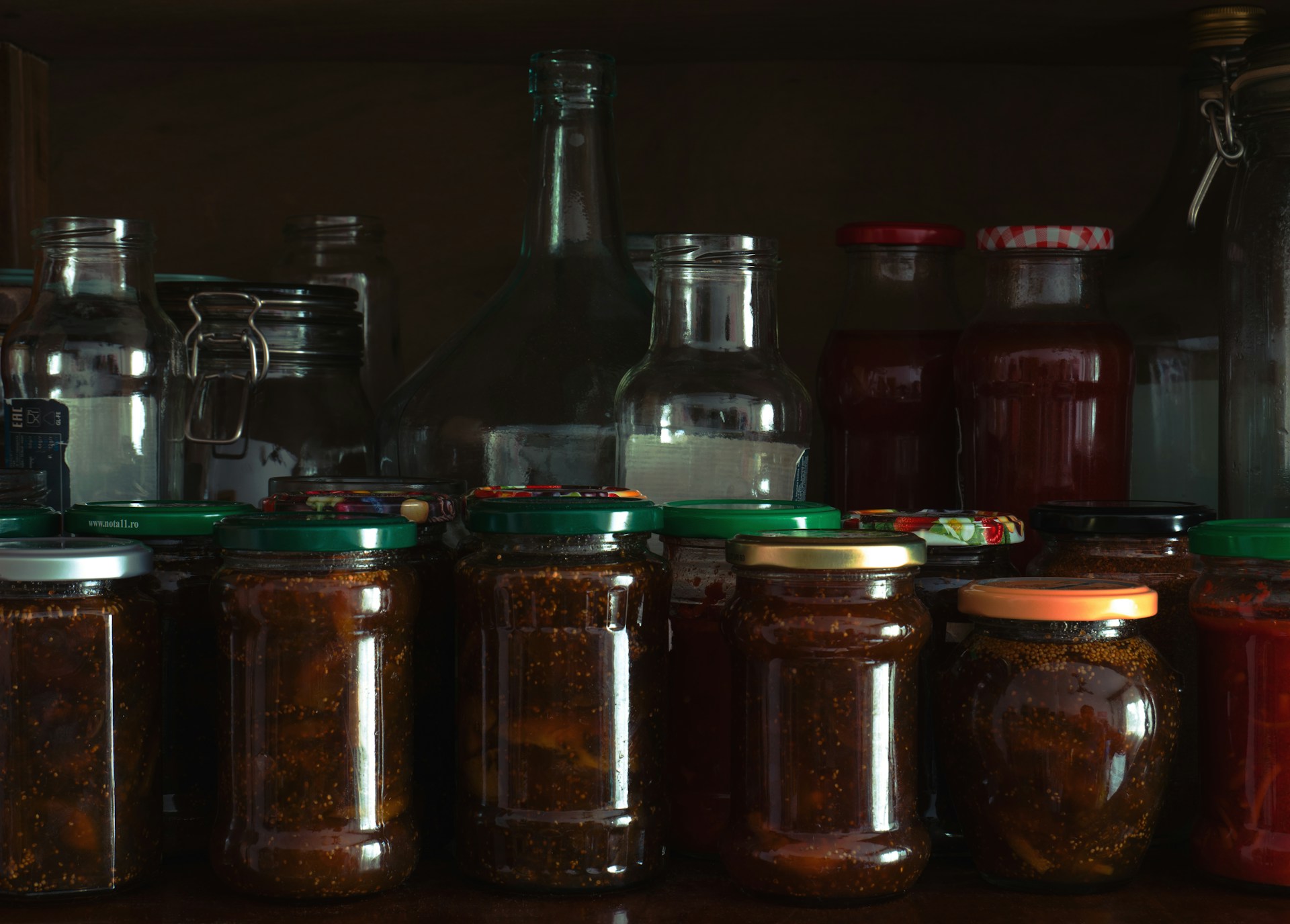Preparedness
Master Your Harvest: Essential Tips for Preserving Summer Bounty

When your summer garden is bursting with more produce than you can consume, it’s crucial to have a strategy to preserve your bounty. The simultaneous ripening of tomatoes, the accumulation of cucumbers, and the rapid bolting of herbs in the heat can lead to a surplus that, if not properly stored, will lose its flavor or eventually spoil. Without effective preservation, your hard-earned harvest becomes waste.
Preserving your summer harvest allows you to extend the enjoyment of your produce into the fall and winter months. This article explores three essential preservation methods: canning, freezing, and drying, each with straightforward steps and safety tips for beginners.
Summer is a season of abundance on the homestead, but this bounty is fleeting. Fresh produce is particularly susceptible to spoilage in hot or humid conditions. Without proper storage techniques, the fruits of your labor can quickly vanish.
Preservation not only reduces waste but also has several other benefits. It minimizes trips to the store during colder months, gives you control over the ingredients and quality of your food, and enhances food security using resources already available in your soil.
Each preservation method is best suited for different types of produce. Even if you’re new to these techniques, you can start with one and expand your skills over time. Canning provides pantry staples, freezing maintains flavor and texture, and drying requires minimal space while keeping herbs ready for use throughout the year.
Canning is an excellent way to store produce for a year or more. This method uses heat to create a vacuum seal in jars, preventing the growth of bacteria and mold. There are two safe canning methods: water bath canning for acidic foods and pressure canning for low-acid vegetables.
“Best for: jams, jellies, fruit preserves, pickles, tomatoes (with added acid).”
To begin canning, wash jars and lids, keeping jars warm until filled. After processing, remove jars and allow them to cool for 12 to 24 hours. For tested recipes and guidance, visit the National Center for Home Food Preservation.
Certain vegetables, like green beans, corn, and carrots, are too low in acid to be safely processed in a boiling water bath. Pressure canning uses higher heat to safely preserve these foods for long-term storage.
“Load jars into the canner and lock the lid. Bring to the correct pressure and start timing. Allow pressure to return to zero before opening.”
Freezing is a quick and flexible method for preserving most produce, maintaining food close to its original flavor and texture. However, many vegetables need blanching first to halt enzymes that cause spoilage.
“Blanch vegetables in boiling water for 1 to 4 minutes. Transfer to an ice bath. Drain and dry completely. Label with date and freeze flat to save space.”
Drying removes moisture to prevent spoilage and is particularly effective for herbs, sliced fruit, and thin vegetables like tomatoes or peppers.
“Dry at 125 to 135°F until brittle or leathery. Keep dried food in sealed containers away from light.”
Choosing the appropriate preservation method depends on the specific fruits and vegetables you have. Some require heat to stay safe, while others are best when frozen or dried. A quick reference chart can help match your produce with the best method, necessary tools, and typical shelf life.
Preserving your summer harvest requires patience and planning, but it rewards you every time you reach for a jar of home-canned sauce or a handful of dried herbs. These preserved foods offer more than just flavor; they embody value, effort, and security.
The habits you establish now will benefit you throughout the year. The more you store, the less you need from external sources, marking genuine progress on the homestead.
“What’s your favorite way to store your harvest? Drop your tips or go-to recipes in the comments below.”
Let us know what you think, please share your thoughts in the comments below.

Preparedness
Master Crisis Survival with the Rule of Three

In an unpredictable world, being prepared for emergencies is more than just a smart idea; it’s essential. Whether it’s a car accident in a remote location or getting stranded in the wilderness, knowing survival skills can make all the difference. However, it’s not enough to just learn these skills or own the right tools; you must also know how to prioritize them in a crisis.
Survival experts often refer to the Rule of Three when making decisions under pressure. This rule provides a guideline for how long you can survive without essential needs like air, shelter, water, and food. While there are variables, such as climate and individual size, the Rule of Three is a useful framework for prioritizing needs.
The most immediate concern in any emergency is oxygen. “Just a few seconds of oxygen deprivation to the brain can cause someone to lose consciousness,” and prolonged deprivation can lead to death. Therefore, if someone in your group is injured and struggling to breathe, your first task is to address this issue. Basic first aid skills, including CPR and the Heimlich Maneuver, can be life-saving.
Once immediate medical needs are addressed, the next priority is shelter. Shelter isn’t just about having a roof over your head; it also includes clothing. Being improperly dressed for the weather can lead to dangerous situations, such as hypothermia. It’s crucial to know how to create a shelter and build a fire for warmth. Fire not only provides heat but also allows for cooking and water purification.
Water is another critical need. Most experts agree that you can’t survive more than three days without it. However, environmental conditions can affect this timeline. In hot climates, for example, you’ll need more water. It’s essential to know how to find and purify water in the wilderness to prevent illnesses like diarrhea, which can hasten dehydration.
While you can survive longer without food than water, it’s still important. Having emergency food supplies can be a lifesaver, but in their absence, you’ll need to forage, hunt, or fish for sustenance. Rationing what you have is crucial to making it last as long as possible.
Beyond physical needs, hope is a critical component of survival. Without it, the will to continue fades. The movie *Castaway* illustrates this well. Tom Hanks’ character says, “I know what I have to do now. I’ve got to keep breathing because tomorrow the sun will rise. Who knows what the tide could bring.” This mindset is vital for enduring tough situations.
Finally, human companionship is another often overlooked necessity. In the film, the character creates a companion out of a volleyball named Wilson to combat loneliness. Having people you can depend on and who will notice if you go missing is crucial for any survival plan.
In summary, preparedness is about more than just having the right tools or skills; it’s about knowing how to prioritize your actions in a crisis. By following the Rule of Three, you can make informed decisions that increase your chances of survival.
Let us know what you think, please share your thoughts in the comments below.
Preparedness
Uncover Hidden Laws Shaping Your Homesteading Dream

For those seeking a lifestyle rooted in self-sufficiency, homesteading offers a compelling path. However, the dream of living off the land is often shaped by the legal landscape of homesteading laws and restrictions that vary widely depending on where you reside.
The concept of homesteading is not new. According to The History Channel, “The 1862 Homestead Act accelerated settlement of U.S. western territory by allowing any American, including freed slaves, to put in a claim for up to 160 free acres of federal land.” Although the Homestead Act was repealed in 1976, the spirit of homesteading persists, with new laws designed to protect the rights of modern homesteaders.
Today, homesteading encompasses a range of practices focused on self-sufficiency, from growing one’s own food to adopting sustainable living practices. Whether in rural expanses or urban rooftops, the homesteading lifestyle is adaptable, but it largely hinges on the “laws of the land.”
One of the key legal instruments for homesteaders is the Declaration of Homestead. As Mother Earth News notes, “A Declaration of Homestead is a simple legal document which can help to protect your house and property in times of economic hardship.” This document can safeguard your home from creditors, though the extent of protection varies by state.
States have different approaches to homestead protection laws, which allow property owners to designate a portion of their property as a “homestead,” making it off-limits to creditors. These protections often differ in terms of acreage or property value, with rural properties generally receiving greater exemptions due to their agricultural use.
For those dreaming of a homestead lifestyle, understanding state-specific laws is crucial. For instance, Indiana allows individuals to claim up to $10,000 worth of property as a homestead without a maximum size limit, offering significant protection from creditors.
Beyond state laws, local regulations can significantly impact homesteading plans. Deed restrictions, zoning regulations, and building codes all play a role in what is permissible on your property. For example, deed restrictions might prevent you from erecting certain structures, while zoning laws could limit your ability to sell homemade goods.
Building codes can also pose challenges, especially for those interested in alternative construction methods. As GOKCE Capital explains, “Even if a parcel of land has no HOA or zoning restrictions, the local municipality or county may still require you to build according to their local building code.”
Livestock ownership is another area where homesteaders must navigate complex regulations. What animals you can raise, and how many, often depend on your specific location. Even within states, counties and cities may have differing ordinances regarding livestock.
For those looking to sell their homestead products, understanding cottage food laws is essential. These laws, which vary by state, govern the sale of homemade food items, often restricting certain goods to protect consumer safety.
Wildlife laws can also affect homesteaders, as many areas have regulations to protect local fauna. Additionally, some places have surprising restrictions, such as prohibitions against front-yard edible gardens.
Beekeeping, a popular homesteading activity, is subject to its own set of regulations. Local laws may limit the number of hives you can maintain, particularly in urban areas.
Finally, rainwater harvesting is a practice embraced by many homesteaders, but its legality varies. While Texas encourages it with tax incentives, Colorado prohibits it, highlighting the importance of researching local laws before collecting rainwater.
In conclusion, while homesteading offers a path to self-sufficiency, it is essential to thoroughly research and understand the various laws and restrictions that may impact your homesteading journey.
Let us know what you think, please share your thoughts in the comments below.
Preparedness
Unlocking Water Independence Digging Your Own Well Explained

Water is the lifeblood of any homestead, serving essential functions such as drinking, cooking, and sanitation, as well as supporting farm animals, livestock, and gardens. While many rely on public water systems, these can be unreliable or inaccessible, especially in rural areas. This makes having a personal well not just beneficial, but crucial for ensuring a consistent water supply.
Before embarking on the journey of digging a well, it’s important to clarify your purpose. Are you looking to establish a primary water source for your household, or do you need water primarily for agricultural purposes? The type of well you need will vary based on these requirements. For non-consumable water needs, like landscaping, a DIY approach might suffice. However, for potable water, it’s wise to engage licensed professionals to ensure safety and quality.
Historically, humans have been digging wells for centuries, but modern considerations make it more complex than simply grabbing a shovel. Most jurisdictions have regulations concerning well construction. For instance, some states mandate permits for drilling beyond certain depths, or require professional drilling services.
Before starting your project, it’s crucial to research local regulations. Key questions include:
– Are there specific city regulations for water wells?
– How deep must the well be to access healthy water?
– What are the restrictions on well width and distance from structures or sewer lines?
– Are there underground utilities to consider?
– What permits or permissions are necessary?
Once you’ve navigated the regulatory landscape, selecting the right location is vital. Investigate whether nearby wells exist, which could affect water availability. Assess the topography and sub-surface conditions, such as aquifers or rock formations. Avoid areas near septic systems, sewers, or waste sites to prevent contamination.
Understanding the depth needed is another critical factor. In many regions, wells must reach depths of 100 feet or more to ensure both water availability and purity. This depth often necessitates professional involvement due to safety concerns and the need for structural integrity.
If you decide to proceed with a DIY well, you’ll need specific equipment, such as:
– 1.5 times the depth of air hose relative to your well depth
– 1.5 times the depth of 1″ PVC pipe for the well tube
– 300 feet of rope or more, depending on well depth
– 5 feet of 8″ PVC and 10 feet of 2″ PVC
The basic steps for constructing a well, as outlined by A&T Well and Pump, begin with digging a hole about 5 feet deep using an auger or post-hole digger. An 8″ PVC pipe is then cut to fit, with 4 inches protruding above the ground. A 2″ hole is drilled into the side for a smaller PVC pipe, which extends to a settling pond 10 feet away. This setup facilitates water transfer and sediment settling.
Next, attach a PVC pipe to a drill, ensuring it is leak-proof, and connect it to a 55-gallon drum to manage mud and water flow. Fill the well hole with water, activate the drill, and maneuver it to break up the soil. As you deepen the well, additional pipe sections are added.
Upon reaching the desired depth, secure the well with SDR 35 pipe, extending 3 feet above ground, and stabilize it with concrete and pea gravel to prevent contamination. Finally, install a well pump, flush the system until the water runs clear, and test the water for safety.
For those interested in a visual guide, A&T Well and Pump offers a YouTube video demonstrating the well-digging process.
Let us know what you think, please share your thoughts in the comments below.
-

 Tactical1 year ago
Tactical1 year ago70-Year-Old Fends Off Intruder with Lead-Powered Message
-

 Tactical1 year ago
Tactical1 year agoVape Shop Employee Confronts Armed Crooks, Sends Them Running
-

 Preparedness1 year ago
Preparedness1 year agoEx-Ballerina’s Guilty Verdict Sends Tremors Through Gun-Owner Community
-

 Preparedness11 months ago
Preparedness11 months agoGood Samaritan Saves Trooper in Harrowing Interstate Confrontation
-

 Tactical1 year ago
Tactical1 year agoMidnight SUV Theft Interrupted by Armed Homeowner’s Retaliation
-

 Survival Stories2 years ago
Survival Stories2 years agoEmily’s 30-Day Experience of Being Stranded on a Desert Island
-

 Preparedness12 months ago
Preparedness12 months agoArizona Engineer’s Headless Body Found in Desert: Friend Charged
-

 Preparedness11 months ago
Preparedness11 months agoBoy Saves Dad from Bear Attack with One Perfect Shot